
A personal brand is the unique combination of skills, experiences, and personality that defines how you present yourself to the world, particularly in a professional context.
In an increasingly digital world, your online presence is often the first impression people have of you.
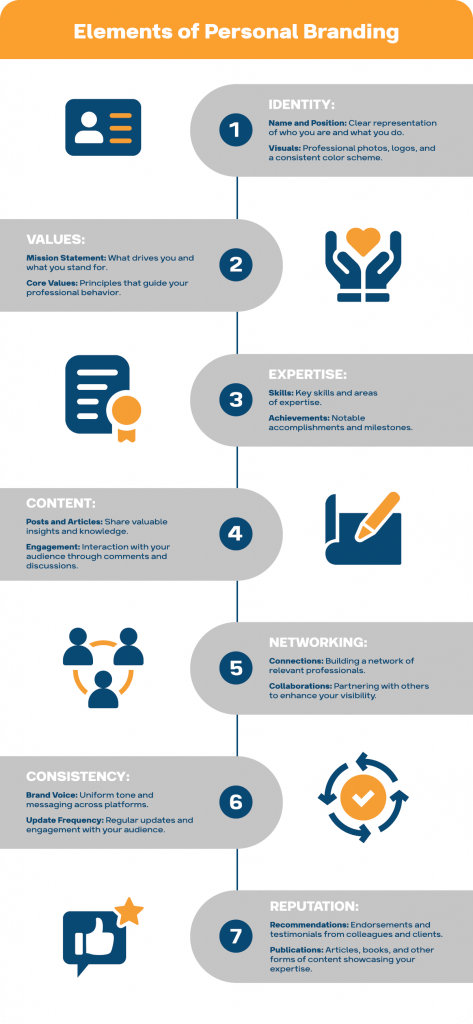
Should you choose LinkedIn for creating your personal brand?
Why is LinkedIn important for personal branding?
If you are a specialist in any of these niches, building a personal brand on LinkedIn is not an overlooked idea but a necessity.
Corporate and Business Leadership
- C-level executives, directors, and managers can use LinkedIn to establish authority in their industries.
- Sharing thought leadership content, industry trends, and leadership insights.
B2B Services and Consultants
- Ideal for consultants, coaches, and business advisors targeting professionals or companies.
- Posting case studies, client testimonials, and value-driven content.
Technology and IT Professionals
- Engineers, developers, and IT consultants can use LinkedIn to share knowledge on cutting-edge technologies, best practices, and industry certifications.
- Highlighting technical skills and projects to attract clients and employers.
Marketing, Advertising, and Creative Fields
- Marketers, copywriters, and designers can showcase their portfolios, successful campaigns, and creative process.
- Engaging with content marketing strategies and creative industry discussions.
Entrepreneurs and Startup Founders
- Startups and entrepreneurs can use LinkedIn to build visibility, attract investors, and network with potential clients or partners.
- Sharing growth stories, challenges, and unique business ideas.
Education and Training
- Educators, trainers, and e-learning professionals can showcase their expertise in curriculum development, teaching methodologies, or corporate training programs.
- Engaging in thought leadership in education and training innovations.
Human Resources and Recruitment
- HR professionals and recruiters can develop their brand by sharing insights on talent acquisition, employee engagement, and company culture.
- Networking with industry professionals and potential candidates.
Healthcare, Legal, and Finance Professionals
- LinkedIn works well for doctors, lawyers, financial advisors, and accountants who want to build trust and establish themselves as authorities.
- Sharing regulatory changes, expert opinions, and offering helpful tips.
LinkedIn audience demographics guide
3 reasons to choose LinkedIn
Credibility and Social Selling: LinkedIn offers a professional environment that enhances credibility and facilitates social selling. It allows for direct contact with targeted clients, making it easier to build meaningful connections.
Diverse LinkedIn Solutions for Personal Branding: LinkedIn provides several tools tailored for personal branding, including advanced targeting options and search capabilities that surpass those of other social networks.
Safe Automation Options: LinkedIn supports various safe automation tools to streamline tasks like connecting with new prospects and managing engagement, helping to optimize your personal branding efforts while adhering to platform guidelines.
LinkedIn strategy for personal branding
LinkedIn Personal Brand Checklist
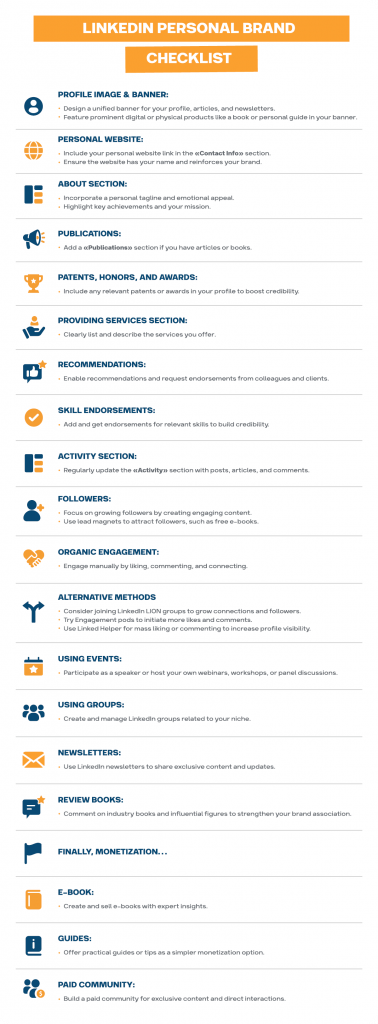
7 elements: How to use LinkedIn for personal branding
Below you will find LinkedIn personal branding strategies based on top examples.
#1 Profile strategy to stand out as a brand
For the average LinkedIn user, having a neat profile page is usually enough, and sometimes we don’t even notice the profile picture. However, if you want to build a strong personal brand on LinkedIn, you need to think carefully about your visual style.
You can take inspiration from users who have already established their personal brand by creating a unified design for your profile banner, article headers, and email newsletter covers.
Profile images and texts
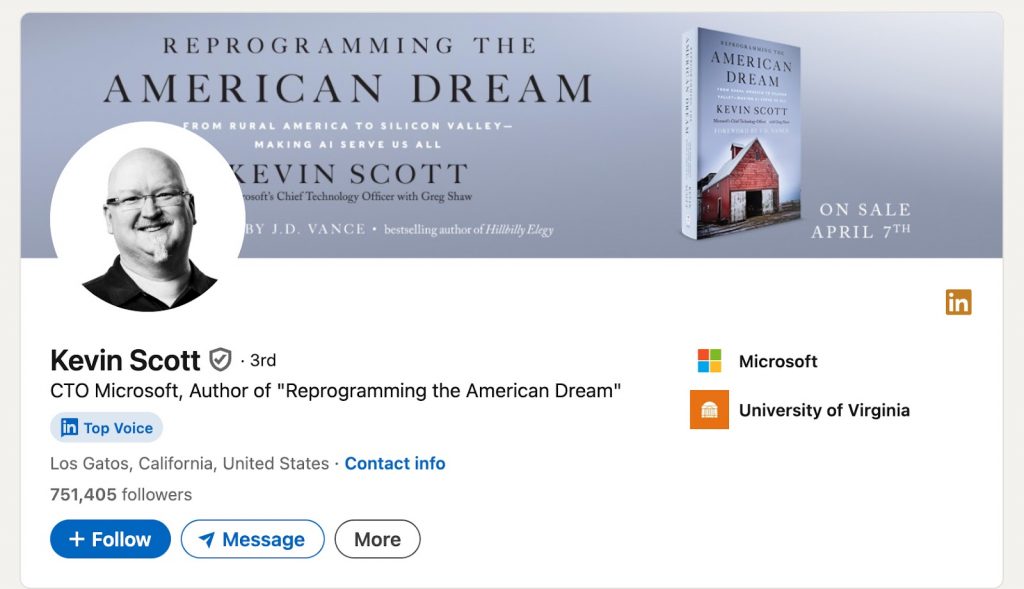
Using consistent visual elements such as profile pictures, banners, and other visuals enhances the overall branding.
Many people with strong personal brands often feature their digital or other products prominently in their profile header. Ideally, this should be a product with your name on it, like a book you’ve written.
However, if you haven’t created a book yet, you can use a personal guide that you offer as an expert under your own name. This is a great way to reinforce your brand using your profile header.
Personal Website
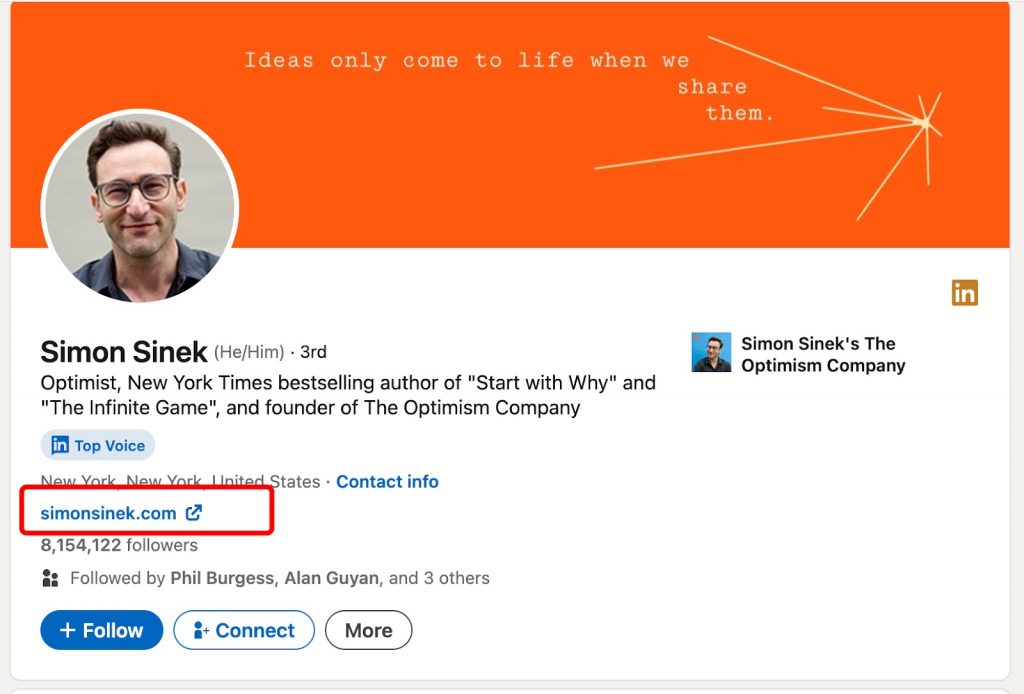
Another common element in profiles of strong personal brands is a personal website. You can add it to the “Contact Info” section or directly on your LinkedIn profile as a communication tool. A personal website that includes your name helps solidify your brand in the minds of visitors, turning your LinkedIn page into a representation of your name and brand.
About Section
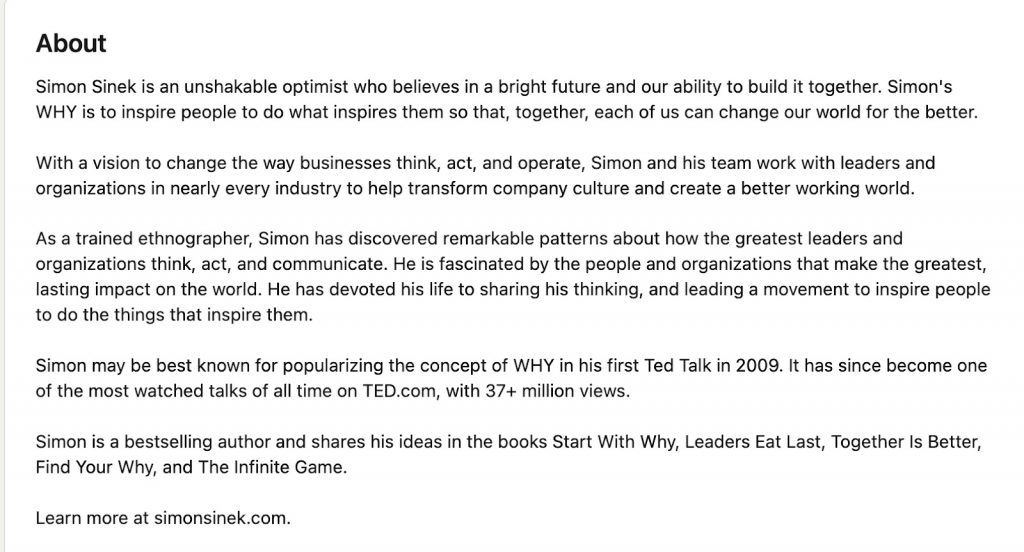
The “About” section is essential for personal branding. Think of it as the extended version of your tagline—a space to express your story in more emotional and detailed terms. Simon Sinek, for example, calls himself an “unshakable optimist,” adding an emotional dimension to his personal brand. His optimism appeals to people universally, and his vision of a bright future resonates emotionally with readers, making his brand both inspirational and aspirational.
The mention of his globally recognized TED Talk and bestselling books reinforces his credibility and influence in the thought leadership space. The About section mentions that Simon works with leaders across nearly every industry, making his personal brand widely accessible.
Skills vs. Publications
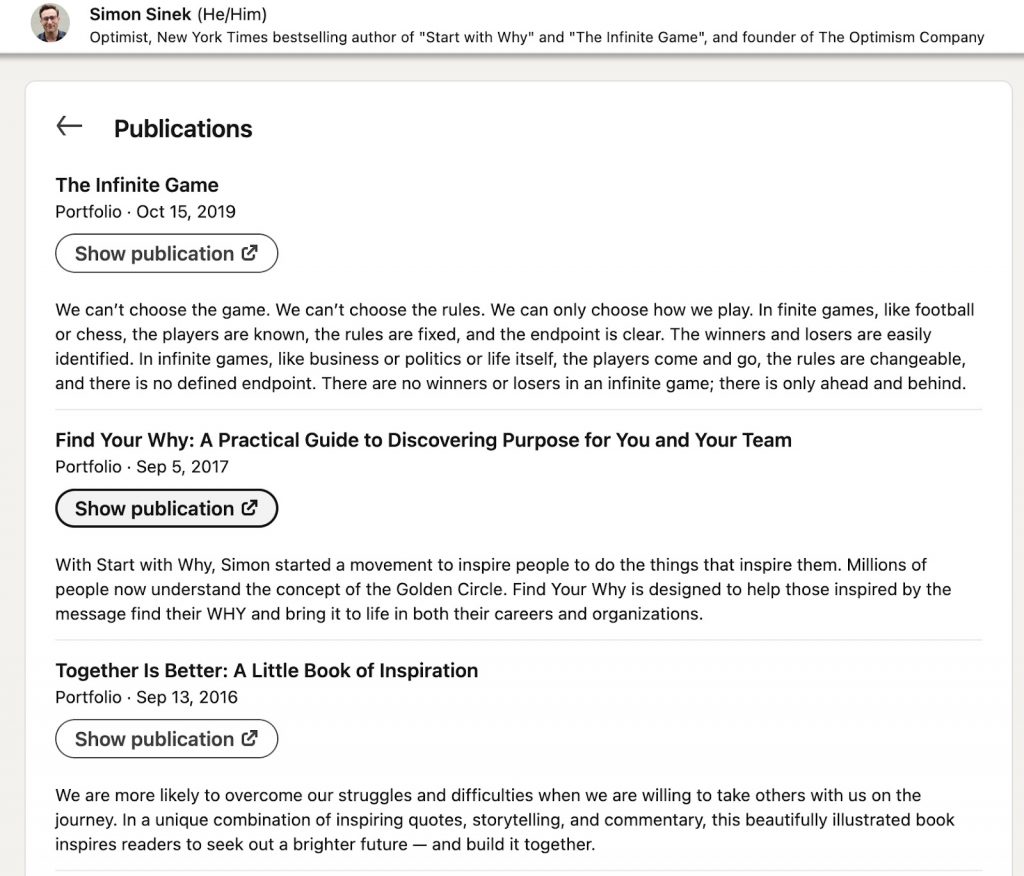
While the “Skills” section is crucial for professionals to be found, if you aim to build a personal brand, consider adding a Publications section. Publications can link to external articles or sources where you contribute, increasing your visibility and authority in the press, which boosts your brand image right from your LinkedIn page.
Patents, Honors, and Awards
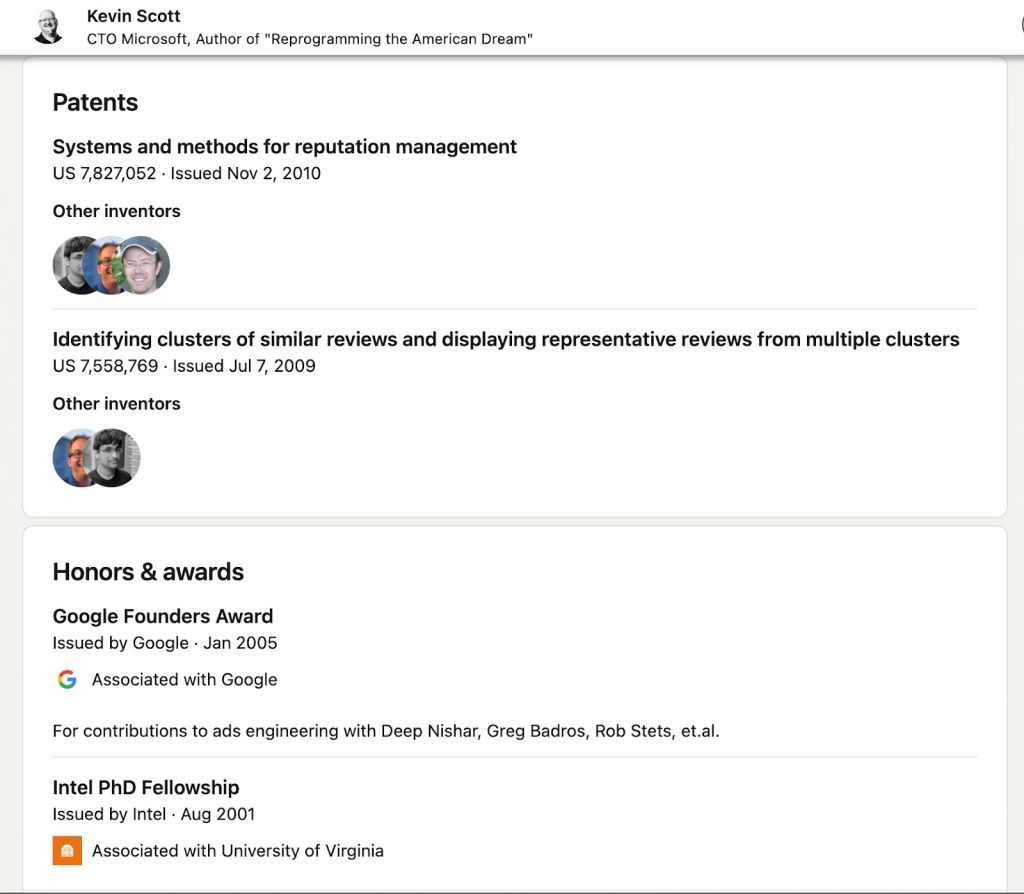
LinkedIn allows you to add sections like Patents and Honors and Awards. If you are a recognized expert and have received awards, showcasing them in this section adds credibility to your personal brand.
These accolades act as tangible evidence that your brand is strong and trustworthy. For instance, major industry recognitions often strengthen profiles, as seen in many leading professionals’ profiles.
Providing Services Section

The Providing Services section is also commonly featured in profiles of people with strong personal brands. If your field of work varies or you are looking for clients, it is essential to add this section. In search results, your services are displayed under your profile, leading directly to your service page, which can help attract potential clients more effectively.
Activity Section
Lastly, the Activity Section is key to optimizing your profile. It shows your posts, articles, and even reposts or comments. This content contributes to your personal brand, making your profile unique. Therefore, we will cover content strategies for personal branding next.
#2 Engagement strategy
Networking Etiquette on LinkedIn
If your primary goal is to build a strong personal brand, networking etiquette is crucial. LinkedIn is a professional platform, not a casual social network, so how you approach connections is very important.
When reaching out to new contacts, it’s essential to avoid direct sales in your first message.
We’ve created a detailed guide on LinkedIn etiquette, including tips on what to say in your initial messages, which you can access via the link.
Follow vs. Connect
Understanding the difference between “Follow” and “Connect” is key to establishing a personal brand. Experts with strong brands tend to focus on growing their number of followers rather than accepting connection requests from everyone.
This is because they create engaging content that attracts followers naturally, even if they don’t connect with everyone directly.
Knowing the difference between these two actions helps you strategize better for growing your audience. To start building a strong following, you can offer a lead magnet, such as a free e-book, to attract your first 500 followers.
Organic engagement vs. alternative ways
You can manually engage on LinkedIn by liking, commenting, and sending connection requests daily if you’re just starting to grow your personal brand.
However, alternative methods can help you accelerate engagement without manual effort.
For instance, you can join LinkedIn LION groups where members mutually agree to add each other to their connections without rejecting requests. This helps you quickly reach your first 500 connections.
Additionally, some services help boost engagement by providing likes and comments on your posts. These services often offer pre-written comment templates, ensuring the feedback on your posts appears natural. However, keep in mind that while the comments and likes are real, the users may not actually engage with your content, meaning they aren’t your potential clients or true fans.
#3 Automation strategy – How to use Linked Helper for personal brand growth
When used wisely and in moderation, automation can significantly accelerate the growth of your personal brand, helping you become more recognizable much faster than if you relied on manual efforts. Linked Helper provides various automated features that can boost your profile visibility, grow your network, and enhance your brand’s presence.
Here’s how you can utilize Linked Helper for personal brand growth:
- Boost Visibility
You can use Linked Helper to increase the visibility of your posts by engaging in mass liking or commenting on others’ posts. Although the comments may be repetitive, this strategy can help draw attention to your profile. Mass likes, in particular, are effective at bringing potential followers to your page, even without adding them to your network. - Learn Your Audience – Scraping
Building a personal brand requires knowing your audience, which can be challenging. Linked Helper allows you to scrape data from LinkedIn, helping you gather essential information about potential clients or companies you want to collaborate with. The data can be exported and used to better understand your audience and tailor your branding strategy. - Grow Your Network – Personalized Messaging Strategy
Personalized communication is crucial for personal branding, even if you’re sending mass messages. Linked Helper supports advanced personalization features that go beyond simple name and job title customization. You can create highly customized message templates with dynamic variables, ensuring each recipient gets a unique message, without the need to write each message manually. - Lead Generation and Follow-up Strategy
Linked Helper can also automate lead generation efforts by systematically reaching out to prospects, following up with customized messages, and nurturing those leads. Automated follow-up strategies are essential for maintaining engagement, especially if your goal is to build a strong personal brand and network. - Integrate LinkedIn with Other Tools
If you’re using external platforms or CRMs to grow your personal brand, Linked Helper can be integrated seamlessly. Whether it’s through direct integration with your CRM or by connecting via webhooks to external applications, you can streamline data collection and management for enhanced efficiency.
By using Linked Helper’s automation tools strategically, you can maximize your personal branding efforts, expand your reach, and create a more robust network—all while saving time on repetitive tasks.
#4 LinkedIn event and groups strategy
Leveraging LinkedIn events and groups can significantly enhance your personal brand’s visibility and credibility. Here’s how to effectively use these features to build and grow your personal brand:
How to use events
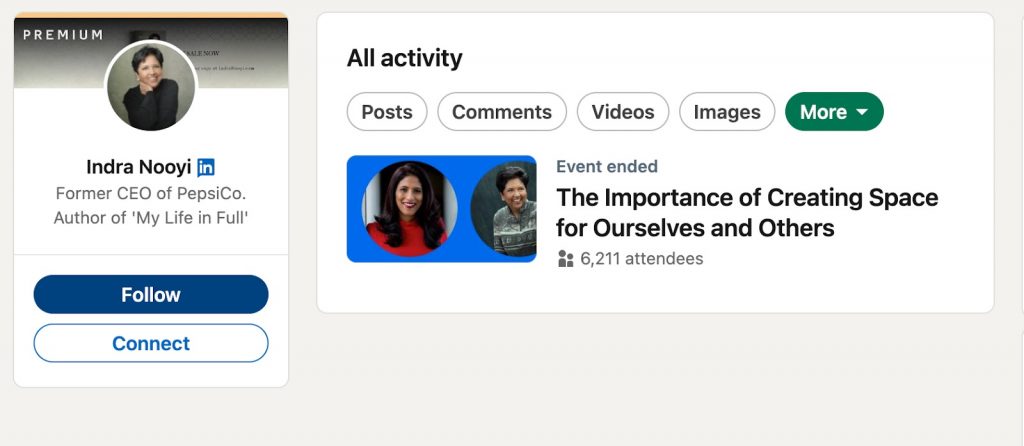
Events on LinkedIn can be a powerful tool for personal branding, especially if your brand is already established. Participating in or hosting events can broaden your reach and reinforce your expertise. Here’s how you can utilize LinkedIn events:
- Participate as a Speaker: If you have the expertise, seek opportunities to speak at events. Being a speaker at large events, such as those attended by thousands of participants, can significantly boost your personal brand.
- Initiate Your Own Events: Organize webinars, workshops, or panel discussions on topics within your expertise. Start small with intimate webinars and gradually move to larger events. Hosting your own events positions you as a thought leader and helps attract an audience interested in your niche.
- Hire External Speakers: If speaking at events isn’t feasible, consider hiring a well-known speaker to present on your behalf or collaborate with you. This can enhance your event’s credibility and attract a larger audience.
How to organize events – our exclusive interview.
How to use groups
LinkedIn groups can play a crucial role in building your personal brand. Here’s how to effectively use LinkedIn groups:
- Create and Manage Groups: Establish a group related to your niche to foster a community around your brand. Share unique, niche-specific content and engage actively with group members to build a strong, loyal following.
- Leverage Group Messaging: Group members can send private messages to each other without needing to connect directly. Use this feature to network with potential clients or collaborators and build relationships within your niche.
- Sponsor Posts in Groups: If there are popular groups within your industry, consider sponsoring posts or advertisements. This can increase your brand’s visibility and position you as an industry leader.
#5 LinkedIn content strategy
1. Consistent Visual Style for Posts
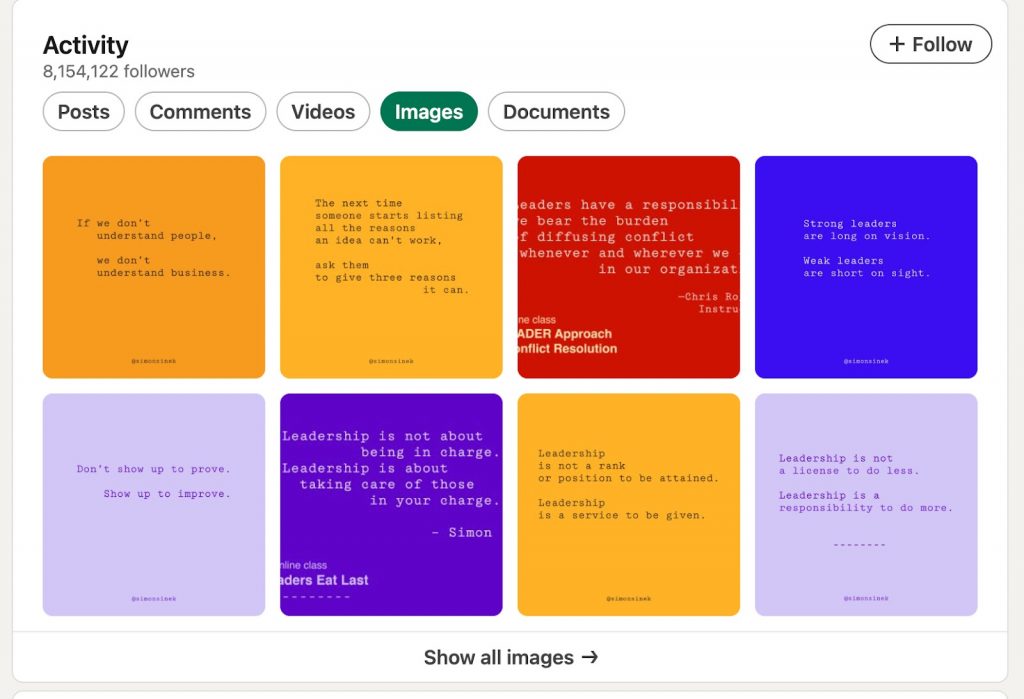
From analyzing top-performing brands on LinkedIn, a unified visual style can make your posts instantly recognizable. Whether it’s consistent colors, fonts, or layouts, creating a distinct look will help your content stand out in users’ feeds.
As seen in successful personal brands, this kind of visual consistency strengthens recognition. You can use tools like Canva to design these branded images or hire a designer to craft a template that you can reuse for every post.
For inspiration, you can check out 100 successful posts from other LinkedIn creators in this article – LinkedIn content strategy for personal branding.
2. Articles and Collaborative Articles
Long-form content, such as LinkedIn articles, allows you to delve deeper into your area of expertise. Here’s how you can use articles effectively:
- Standard Articles: Provide insights, case studies, or how-tos that showcase your knowledge.
- Collaborative Articles: Participate in LinkedIn’s collaborative articles, which pool insights from various experts. This is a great way to associate your name with industry leaders and engage a broader audience.
3. Newsletters
Newsletters can become a key thread in building ongoing engagement between you and your audience. Subscribers can also receive notifications via email, making it a convenient way to share your expertise, career updates, and events you attend. It’s an excellent tool for staying top-of-mind and nurturing relationships.
For more details and examples of effective newsletters, check out our article.
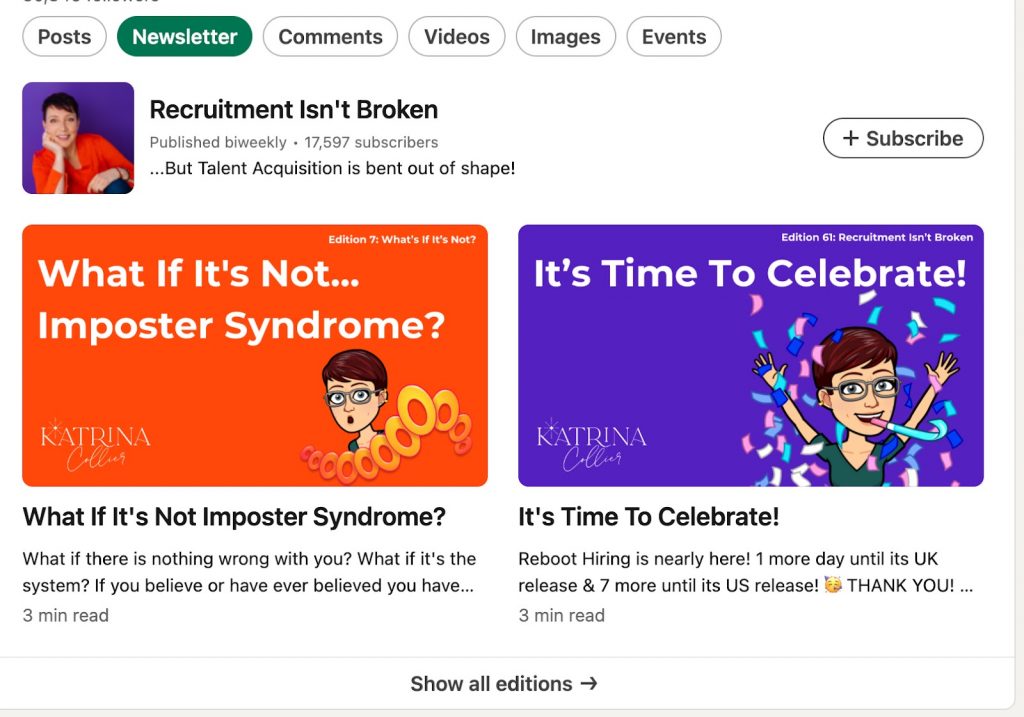
4. Comments
Comments on LinkedIn are visible when someone visits your profile, and the quality and depth of your comments can reflect the strength of your personal brand. By posting active, thoughtful, and engaging replies, you build trust with your audience and showcase a more genuine, non-salesy side of yourself.
So, don’t shy away from taking the time to write meaningful comments.
5. Book Reviews

One successful strategy observed in well-known accounts is to comment on books or influential people in your industry. When you share your opinion on books or industry insights, you position yourself alongside those leading figures, which strengthens your brand association.
#6 Social proof strategy
A significant advantage of building and growing a personal brand on LinkedIn is the ability for any user to leave a recommendation if you enable this feature on your profile.
Additionally, by adding relevant skills, you can receive endorsements from your network. After analyzing profiles of experts with established personal brands, we see that they often have numerous endorsements.
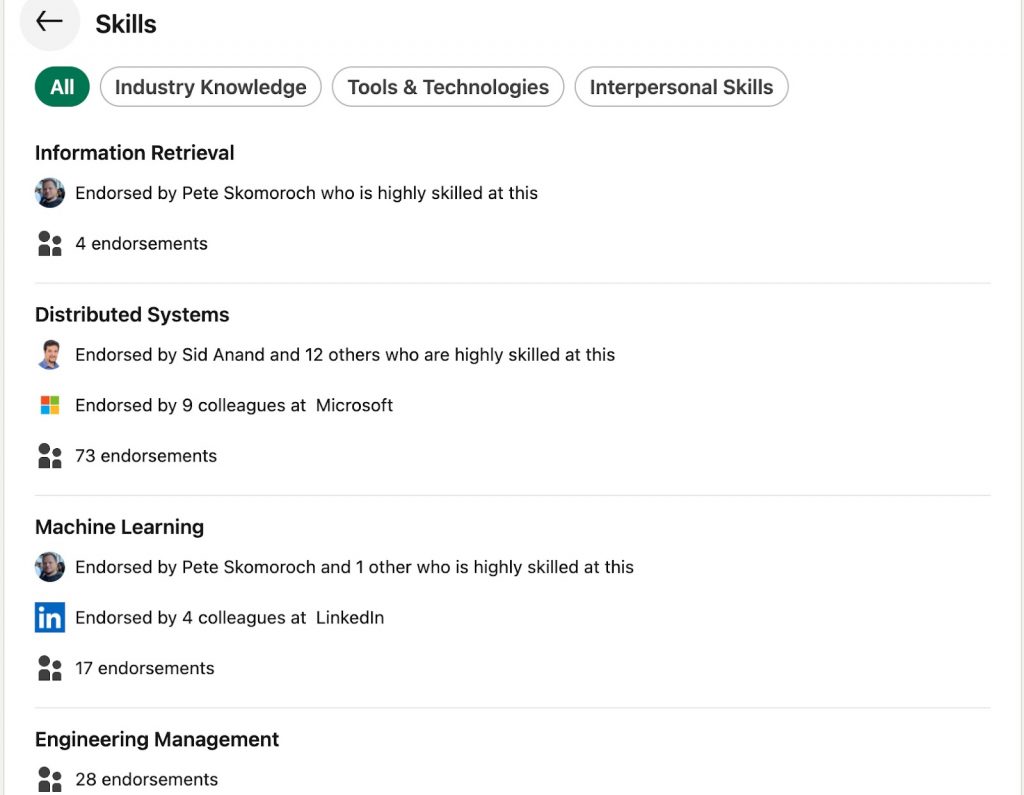
If you’ve worked at a major company, ask your colleagues there to endorse your skills. The association with a recognized corporate brand lends credibility to your expertise and strengthens your personal brand as an expert.
#7 Monetization strategy
E-book – One of the most popular ways to monetize a personal brand is through creating e-books that provide expert insights and knowledge.
Guides – A simpler way to monetize is by offering insider tips and advice that people can’t easily find online.
Paid Community – Platforms like Nas.io allow you to build paid communities, where your followers can access exclusive content and connect with you directly.
LinkedIn personal branding examples by niche
Explore real-life profiles showcasing effective personal branding.
#1 Example in Corporate and Business Leadership
Profile: Indra Nooyi LinkedIn
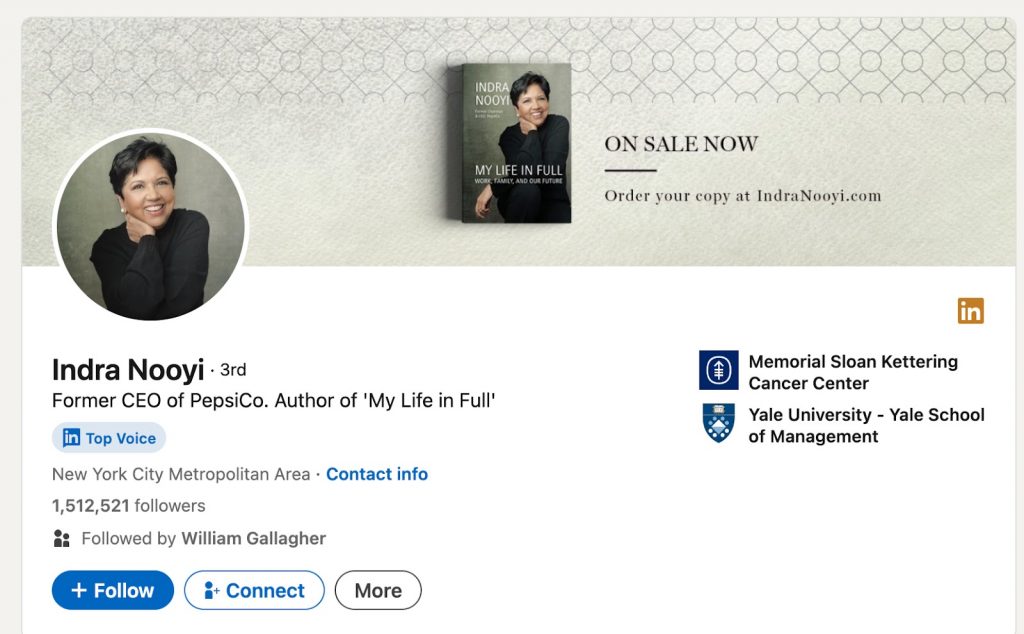
In this personal branding example, we see that Indra Nooyi, former CEO of PepsiCo, uses her profile to immediately establish her credibility. Her background image features her book, making her profile instantly recognizable as part of her personal brand. By placing visual emphasis on her book, she presents herself as a thought leader. Her profile also uses consistent visual themes for her articles, with matching cover designs, creating a cohesive and polished look.
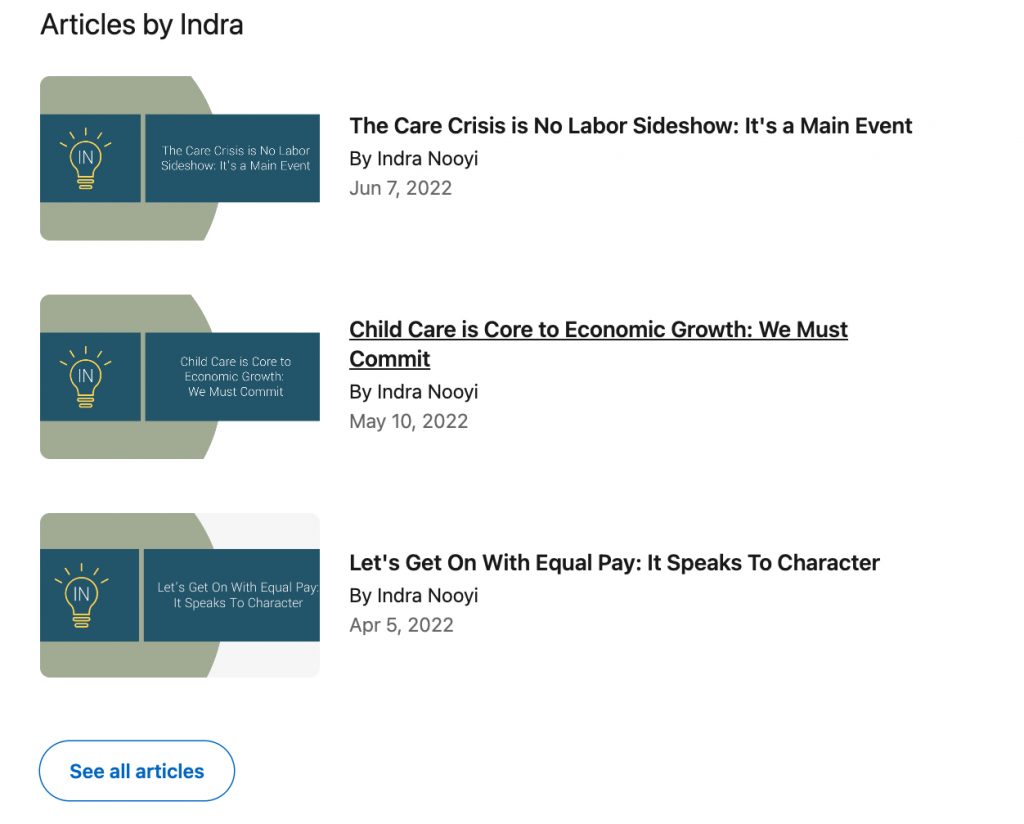
Key Strength: Visual consistency and expert status solidify her brand as a prominent business leader.
#2 Example in B2B Services and Consulting
Profile: Blair Enns LinkedIn
Blair Enns, a consulting expert, masterfully uses his headline to immediately communicate his personal brand with the slogan “Win Without Pitching.”
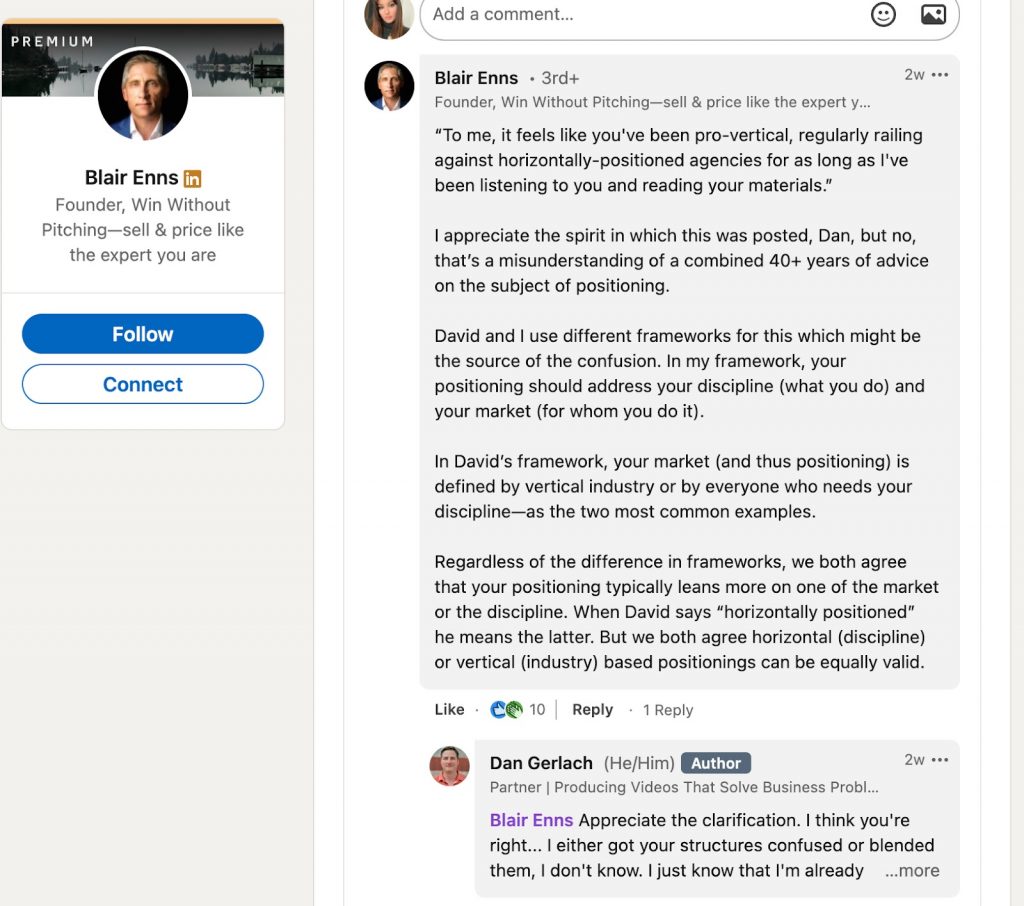
His headline is clear, concise, and visible in profile previews, making a strong first impression. Additionally, his thoughtful and in-depth comments on posts further enhance his personal brand, showing his genuine engagement with the community.
Key Strength: His personal brand is centered around a unique value proposition for consulting firms, making him a go-to expert for client acquisition strategies. His engaging content and strong messaging boost his credibility.
#3 Example in Technology
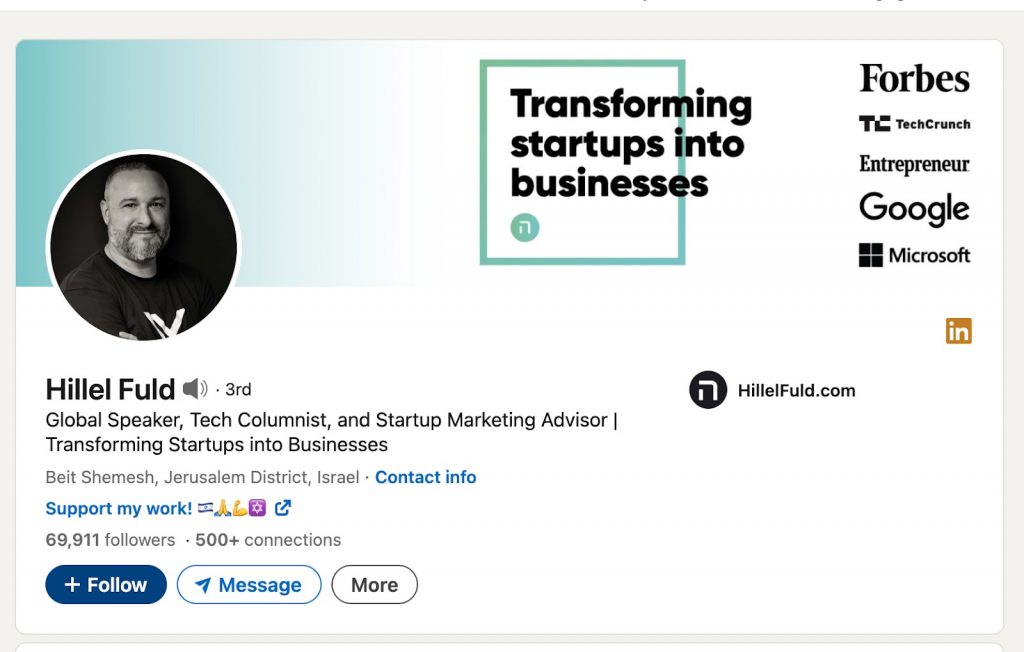
Hillel Fuld, a global speaker and startup advisor, effectively positions himself with a headline that reads “Global Speaker, Startup Adviser, and Tech Blogger.” His brand bridges the gap between the tech and startup worlds, giving him credibility with both entrepreneurs and investors. He consistently engages his audience with industry news, product reviews, and startup success stories.
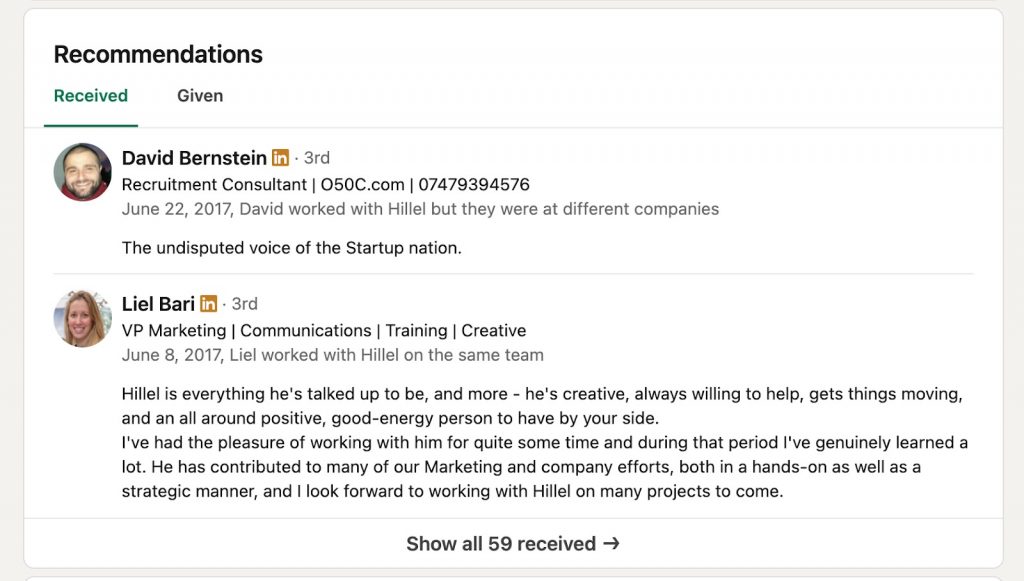
Key Strength: His profile includes 59 recommendations from real clients, highlighting his credibility. His cover image promotes his personal mission to help transform startups into successful businesses, and he includes logos of major corporations he’s worked with. He also monetizes his brand by linking to his paid community on Nas.io
#4 Example in Talent Acquisition
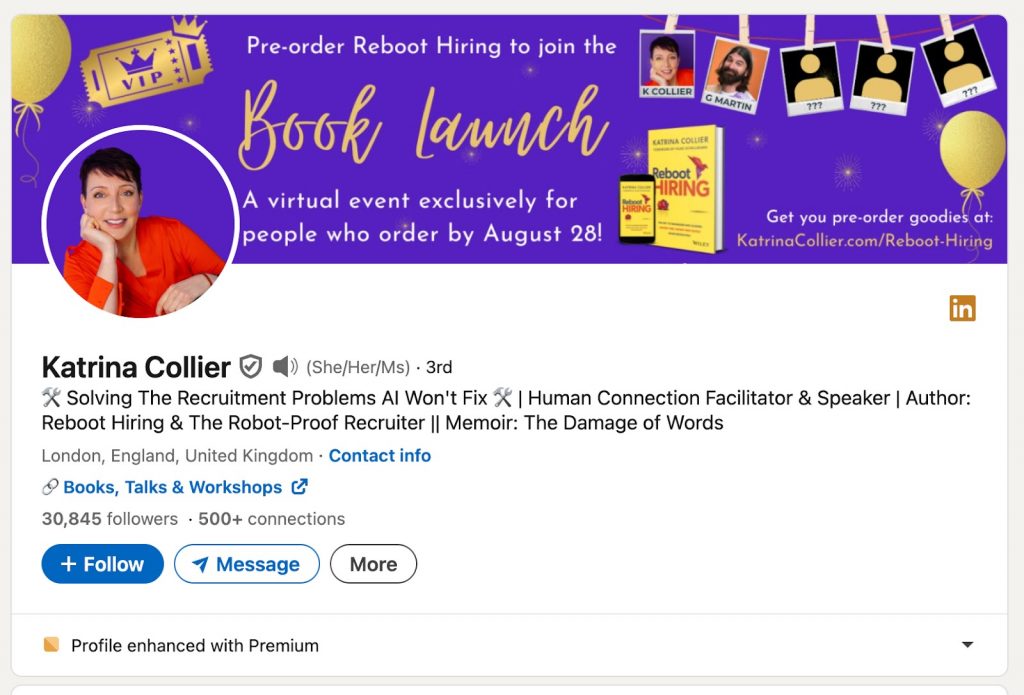
We can see how effectively she promotes the launch of her new book and an exclusive event dedicated to those who pre-order the book by a certain date, clearly displayed in the profile header.
The color scheme of the cover and main profile photo is cohesive, giving her page an immediate sense of personal branding. This is a strategy you can adopt.
The link to her personal website is not just listed as a simple website; it’s titled “Books, Talks, and Workshops,” highlighting what the site offers. The headline helps visitors instantly understand her mission, which focuses on solving recruitment challenges that AI cannot address.
In addition to maintaining a consistent personal style across all profile visuals, from the header to the newsletter covers, we also see 68 recommendations from real clients, as well as various awards. For instance, she has ranked number one in a list of thirty-two books about recruitment.
Her profile also includes publications and 18 skills endorsed by other users, as well as licenses and certifications. Unfortunately, LinkedIn currently lacks a dedicated section for these achievements.
#5 Example in Real Estate
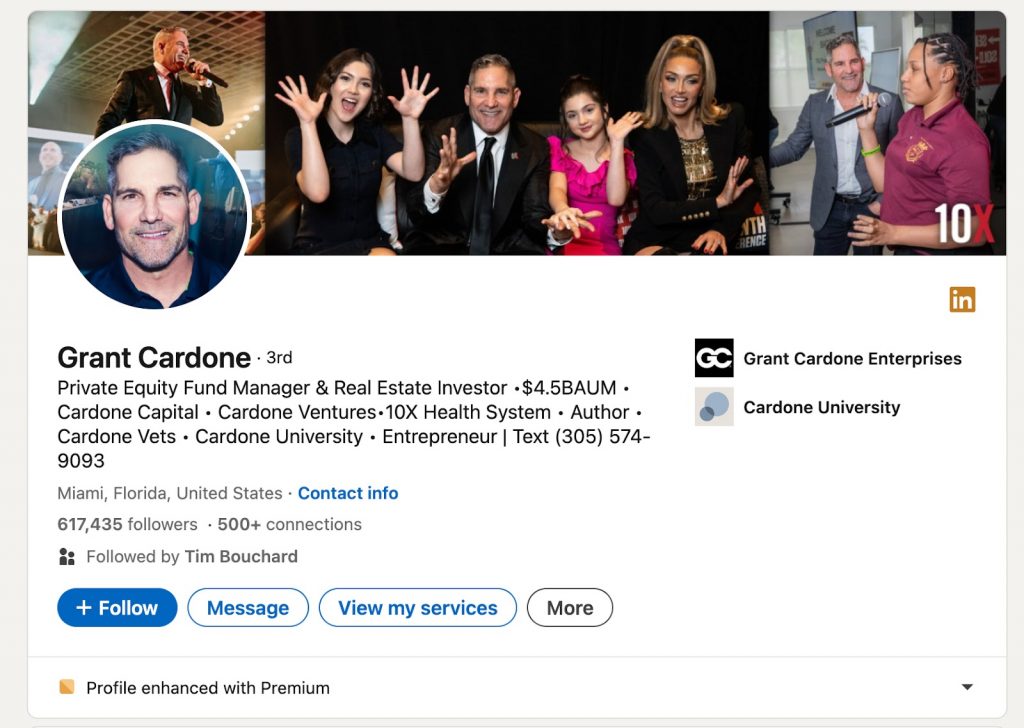
Grant’s personal brand stands out due to its bold, high-energy approach to real estate investing and business growth, encouraging others to think big.
On his profile, we see a well-structured example of how to present services effectively. As a real estate marketing expert, his personal brand allows users to request his services directly from his page, making the profile highly functional.
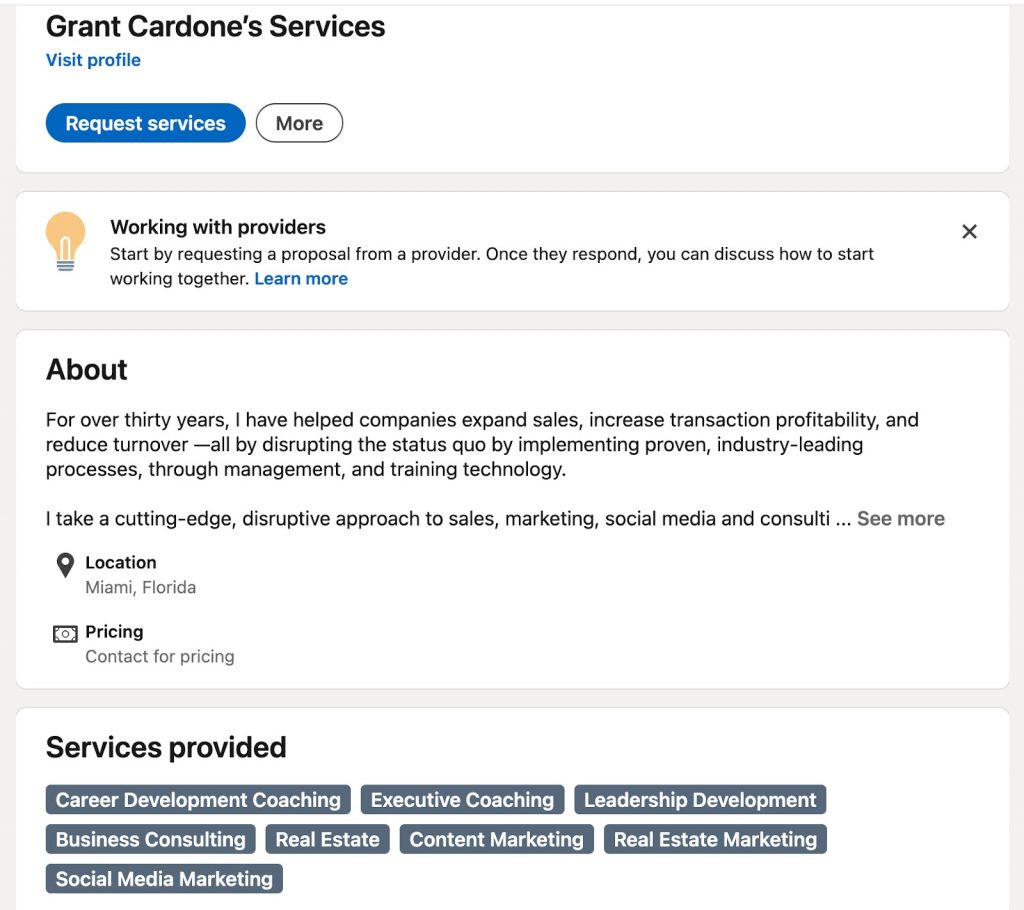
Additionally, his “Publications” section is a great example of branding. Each link leads to external platforms where users can purchase his books, which strengthens his personal brand and credibility. This integration of resources effectively promotes his work and expertise, reinforcing his authority in the real estate industry.
LinkedIn content ideas for personal branding
All in all…
Personal branding on LinkedIn is a fantastic idea, even if you’re starting from scratch. Such a profile can bring you more real clients than a personal website because LinkedIn enhances your visibility through algorithms, recommendations, and content notifications, and you can include external links.
It’s an ideal platform for strengthening your personal brand and monetizing it through book sales, lead generation, events, and creating a paid community. Thanks to safe automation, you can find followers faster and boost your visibility!